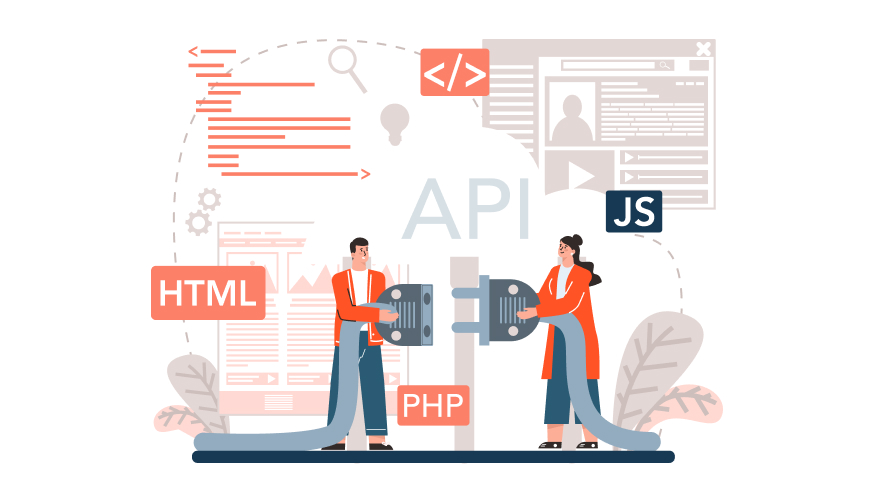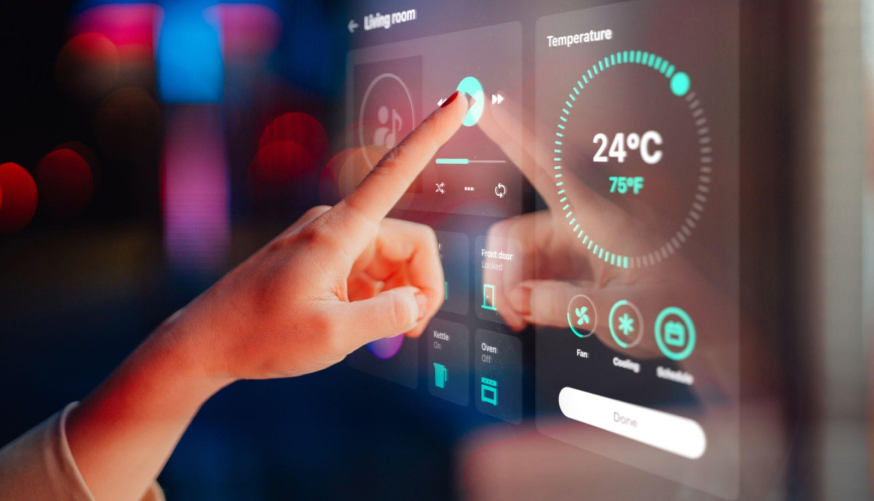
API facilitates the effective communication among two different software elements that follows a specific set of definitions and protocols. API in full form, Application Programming Interface software interface lets the applications interact with one another without any user intervening in it.
In simple words, API means a set of software functions and processes. It is a software code that lets products and services interact with other products and services without any need to know how they get deployed.
For instance, if you consider a weather bureau system that records everyday weather information, the weather application on your phone communicates to the system via ‘APIs’ and brings everyday weather updates to your device.
Let’s explore more about APIs, how they work, their benefits, and their applications in detail.

Explaining API architecture is the best in terms of client and server relationships. While the application that sends a request makes the client, the application that sends a response forms the server.
In the above example of the weather bureau system, the weather database is the server while the mobile app forms the client. There are 4 methods where APIs function based on when and why they get developed.
SOAP stands for Simple Object Access Protocol. SOAP APIs facilitate client and server exchange with the help of XML. This is the less flexible API which was much more popular before.
Known as Remote Procedure Calls, these APIs complete a function on the server, while the server pushes the output to the client back.
Being another advanced web API solution, it uses JSON objects to transfer data. It lets two-way communication among client apps and servers. The server then sends the callback notifications to the clients who see connected, which makes them highly efficient compared to REST APIs.
These are the most well-known and flexible APIs available digitally today. The client prompts sending requests to the server in the form of information. The server takes this client input and begins the internal functions to finally return the output data to the Client back.
Also, read more about E-commerce and What are its Applications?

Here are certain reasons for using API:
Here are some important characteristics of API:
Let's take a glance at the four major types of APIs:

The basic communication level of APIs includes:
These are usually used in REST form, which offers programmers a high abstraction level. These APIs focus on performing limited functionality.
These APIs have the minimum level of abstraction which is more detailed. They allow the programmers to alter the functions within the app module and hardware at the granular level.

REST or Representational State Transfer is a set of functions like PUT, GET, DELETE, and so on. The clients can use it to access the server data, where they exchange data with each other with HTTP.
The core feature of REST API is its statelessness. This means that the servers find it unable to save the client data between the requests.
The client requests sent to servers work similarly to URLs you hit in the browser for visiting a website. The server response is plain information with no graphical representation of a web page.
Coming to Web APIs, it is an application processing interface that a web browser and a web server uses. While every web service is an API, every API is not a web service.
REST API is a particular type of web API that utilizes the conventional architectural style.
Various terms like Java API, and service APIs have been here for a long time because APIs were developed even before the World Wide Web.
The advanced web APIs are ideally the REST APIs, so we can see these terms used interchangeably.
Also, read more about Importance of Software Testing

The four major benefits of using REST APIs are:
APIs are useful in integrating new applications with the current software systems. This improves the speed of the development because every functionality need not be written from the beginning. You can utilize the APIs to scale the existing code.
Every industry changes with the arrival of a new application. Businesses should respond promptly and augment the rapid deployment of advanced services. Making differences in the API level helps businesses do this with no need to rewrite the entire code.
API offers a unique opportunity for businesses to suit the client's requirements across various platforms. For instance, maps API facilitates the integration of map information through Android, websites, iOS, etc. Every business can give similar access to internal databases with the help of free and paid APIs.
API builds a gateway between two systems. Every system is responsible to create internal changes so that it doesn't impact the API. Thus, the future code changes by one party can't affect the other.
API Integrations refer to the software components that automatically update the information between client and server.
Some instances of API integrations include the automatic sync of the data from the device gallery to the cloud, the auto-time sync on the device while traveling, etc.

Let's understand the important applications of API:
Building an API that the developers need to operate with needs due diligence and effort. Let’s walk through the five steps required to build a high-quality API design:
ecifications such as OpenAI, offer the blueprint for the API design. You need to assess the various use cases beforehand to confirm that API follows all the present API development standards.
The API experts perform the API prototyping with boilerplate codes. After testing the prototype, developers can customize this to suit internal specifications.
API Testing is similar to software testing and needs to avoid bugs and any defects. API testing tools can help to test these APIs against possible cyber attacks.
API documentation is a guide that scales usability. Well-documented APIs provide a range of functions and applications which are highly popular in a service-oriented architecture.
Just like Amazon, the online marketplace, API is a marketplace available for developers where they can buy and sell the APIs. You can monetize the API by listing it.
Also, read more about B2B Website Development Trends

API testing techniques work similarly to the other software testing methods. The key focus of API testing is to validate the server responses. The responsibility of API testing includes:
The steps toward implementing the new API are below:

Here are some API examples of everyday life that utilize various protocols and specifications.
Businesses are transforming digitally quicker than ever to maintain the competition and meet the increasing customer demands.
APIs are the ways to help companies digitize, connect and innovate these throughout the products and services they offer.
The API-driven approach can help your business to simplify and scale up the go-to-market strategies, foster customer experiences, increase operational agility and speed, build and pursue the market, revenue, channel opportunities, etc.
If you wish to deploy web app and API integration services to experience the best from feature-rich apps and APIs, let's talk today!
IPIX Technologies is a web development company in India that provide a solid foundation for building a successful business. Our expert team of professionals with their hard work and determination will pave the way for extraordinary accomplishments. Feel free to let us help you pursue your goals. Experience the power of innovative web design with IPIX Technologies.